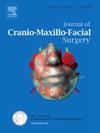颧骨植入物用于肿瘤和先天性缺陷患者的康复:病例系列。
IF 2.1
2区 医学
Q2 DENTISTRY, ORAL SURGERY & MEDICINE
引用次数: 0
摘要
本系列病例旨在评估肿瘤患者使用颧骨种植体支撑假体进行康复治疗的临床效果。十名因癌症而接受上颚切除术的肿瘤患者被纳入研究。根据规定的纳入标准,使用颧骨种植体进行康复治疗。对手术和修复程序进行了标准化,并对植入物和修复体的存活率以及并发症进行了评估。研究对象包括 10 名患者,平均年龄为 66.5 岁。共植入 35 个种植体,平均随访 5.78 年,存活率为 94.29%。40%的患者出现了生物并发症,40%的患者出现了修复并发症,需要进行修改,但没有完全失败的案例。颧骨种植体为肿瘤患者的康复提供了一种可行的解决方案,尤其是在植骨被禁用或不切实际的情况下。然而,颧骨种植体也会带来中长期的并发症,需要慎重考虑。未来的研究应侧重于更大规模的研究和荟萃分析,以提供更有力的证据。本文章由计算机程序翻译,如有差异,请以英文原文为准。
Zygomatic implants for rehabilitation of patients with oncologic and congenital defects: A case series
This case series aimed to assess the clinical outcomes of oncologic patients rehabilitated with a zygomatic implant-supported prosthesis. Ten oncologic patients who underwent upper jaw resections due to cancer were enrolled in the study. Zygomatic implants were utilized for rehabilitation according to specified inclusion criteria. Surgical and prosthetic procedures were standardized, and implant and prosthetic survival rates, along with complications, were evaluated. The study cohort comprised 10 patients with a mean age of 66.5 years. A total of 35 implants were placed, with a survival rate of 94.29% at the mean follow-up of 5.78 years. Biological complications affected 40% of patients, while prosthetic complications occurred in 40% of patients, necessitating modifications but with no outright failures. Zygomatic implants offer a viable solution for oncologic patient rehabilitation, particularly in cases where bone grafting is contraindicated or impractical. However, they present medium-to long-term complications that warrant careful consideration. Future research should focus on larger studies and meta-analyses to provide more robust evidence.
求助全文
通过发布文献求助,成功后即可免费获取论文全文。
去求助
来源期刊
CiteScore
5.20
自引率
22.60%
发文量
117
审稿时长
70 days
期刊介绍:
The Journal of Cranio-Maxillofacial Surgery publishes articles covering all aspects of surgery of the head, face and jaw. Specific topics covered recently have included:
• Distraction osteogenesis
• Synthetic bone substitutes
• Fibroblast growth factors
• Fetal wound healing
• Skull base surgery
• Computer-assisted surgery
• Vascularized bone grafts

 求助内容:
求助内容: 应助结果提醒方式:
应助结果提醒方式:


